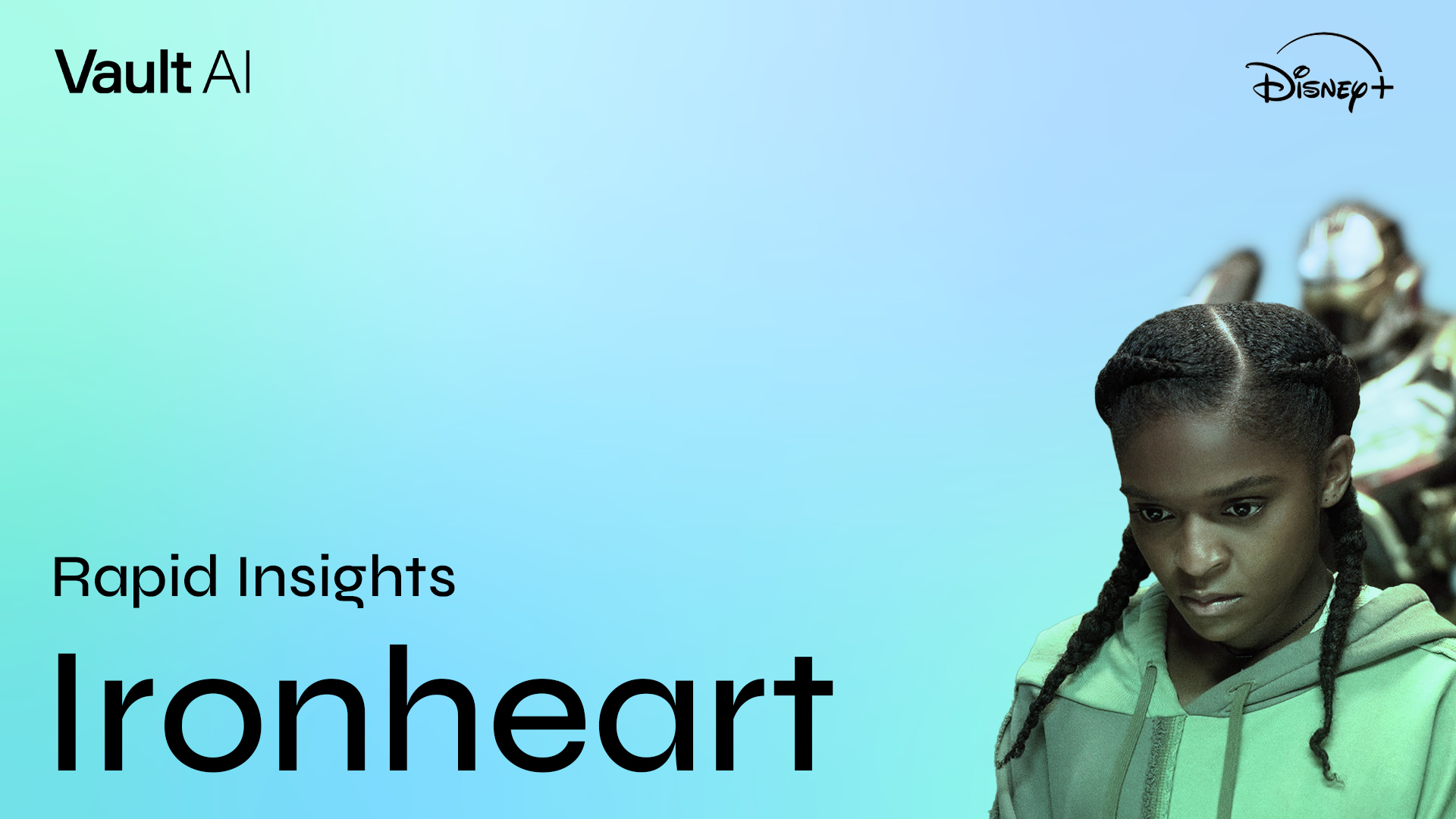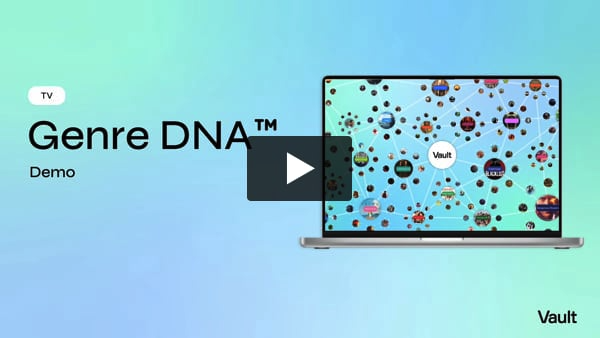Rapid Insights: ‘Ironheart’ Hints at a Quiet Revolution in How We Tell Hero Stories

The number of women superheroes on TV has jumped in the past few years thanks to the broader explosion of comic book and superhero content in general. Heirs to a storied dynasty (Wonder Woman, The Bionic Woman, Xena: Warrior Princess), this most recent crop of female-led titles kicked off with Netflix’s Marvel deal (Jessica Jones), passed through DC’s Arrowverse (Supergirl, Batwoman), and broadened to additional streamers like Hulu and Disney+ (She-Hulk, Ms. Marvel, Echo, Ahsoka). And with last week’s premiere of its newest Marvel series, Disney+ has just introduced another buzzy, compelling heroine into this impressive pantheon.
Here’s what you need to know about Ironheart and other female-led superhero shows:
Vault AI uses index scores to describe the impact a given story/theme/element will have on specific KPIs:
≤79 Disappointing 80-89 Challenging 90-109 Average 110-119 Promising 120+ Outstanding
Do these shows always attract the same viewers?
No. The age and gender skew of their audiences can vary widely, from mostly men (Ironheart, She-Hulk, Ahsoka) to primarily women (Batwoman, Supergirl), and heavily 30+ (Echo, Jessica Jones) to largely <30 (Ms. Marvel). This variation likely reflects the wide range of tones, subgenres, and violence levels incorporated into these series, each of which has a different appeal. For Ironheart, we’re seeing a viewership that’s 60% men and 58% aged 30+, aligning most closely with fellow Disney+ entry She-Hulk.
Is it important to these shows’ success that their superheroes are women?
Not like it used to be. For the DC and Marvel series that premiered several years ago, the fact that they were led by powerful heroines rather than much more typical male protagonists was one of their very top viewership drivers (Strong Female Character, 151 – Batwoman (2019); Strong Female Protagonist, 148 – Jessica Jones (2015)). However, as both universes expanded and female superheroes happily became more common–both on TV and in theaters–their gender became less important. The more recent shows in each canon instead pull in viewers based on the nuances of their own specific stories and character development; the fact that they’re helmed by women doesn’t even appear among their key drivers.
What does spur ratings among the more recent female-led series?
Superhero excitement and relatable characters. As with their male-led counterparts, shows like Ms. Marvel, Echo, She-Hulk, Ahsoka, and Ironheart trade heavily on their Stylized Action & Violence, heightened suspense (Life in Danger, Dangerous Mission), cool and imaginative Superpowers, and broader universe connections (Marvel Universe, Star Wars Universe) to get fans pumped and eager to watch. And underlying this layer of Action and Adventure is a broad base of emotional heart as these characters must navigate Family Relationships, Family Conflict, Emotional Turmoil, Friendships, and, in one case, Teen Angst, making it easy for viewers to sympathize and connect.
What’s setting Ironheart apart from the other Marvel shows?
A Journey of Self Discovery (160). Though Ironheart is a superhero origin story just like many of its brethren, this version focuses on a frustrated teenage genius eager to be recognized for her skills and put her own stamp on the world, and its unique viewership drivers–beyond the action and Marvel connections–all revolve around her personal growth. The show tracks protagonist Riri, first introduced in the second Black Panther film, as she grapples with Tough Decisions (135), works to Overcome Adversity (126) (lack of funds, MIT expulsion, personal loss), and ultimately rises to the occasion, both emotionally and through her crime-fighting tech advancements (Stepping Up, 124; Bettering Oneself, 128). Riri is also a heroine who, like her idol Iron Man, invents her own superpowered capabilities rather than develops them supernaturally (as in Ms. Marvel, She-Hulk, Echo, and Jessica Jones).
What’s the buzz potential for these superhero series?
Extremely high. Thanks to the widespread popularity of their respective universes, these female-led series–just like their male-led counterparts–can spur tremendous chatter online, especially the more recent entries. Whereas ten years ago, shows in this genre took a bit longer to catch on and build word of mouth (e.g. 2015’s Jessica Jones, which didn’t really hit its stride until T+40 days after release), Ms. Marvel, Echo, She-Hulk, Ahsoka, and now Ironheart (all released since 2022) immediately maxed out our social buzz meter (at 160) with their premiere and remained there for a number of weeks.
—
Most Popular Rapid Insights
Redefine your understanding of TV subgenres
Introducing Genre DNA™ – TV subgenres redefined by groundbreaking AI analysis to reveal the true drivers of viewership.
See the insights that others can’t
Genre DNA™ goes beyond traditional TV genre classifications by analyzing over 1,000 scripted and unscripted series on both linear and SVOD platforms from the last 5 years.
Each Vault Genre DNA™ report offers a precise analysis of your chosen TV subgenre, uncovering its unique drivers of viewership.
*Publicly released trailers for series are evaluated using Vault’s algorithms – utilizing our proprietary 120K+ story element database alongside viewership performance and other datasets – to identify unique combinations of stories, themes, characters, and genre elements that will drive success.
